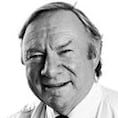Former senior United States officials have reportedly been talking to Russian government ministers about creating a negotiating framework for talks on ending the Russian war in Ukraine.
It is part of a potential two-stage approach in which Nato-led military aid to Ukraine is optimised during the current counter-offensive, yet both sides are able to pursue a cessation of fighting over coming winter months.
These informal and unofficial initiatives are part of an international diplomatic effort to contain the war. It involves China and middle powers such as India, Turkey and Brazil, together with European regional powers and leaderships along with African and Asian ones.
These exercises in statecraft are designed to head off dangerous threats to world peace – they are not a surrender to defeatist or realist voices opposed to or sceptical about Ukraine’s war aims.
READ MORE
In April Richard Haass, Charles Kupchan, Mary Beth Long and Thomas Graham met the Russian foreign minister Sergei Lavrov in New York to discuss a possible negotiating framework. Each has held office in previous administrations and they have written prominently about how such talks might work.
Graham, a former Russia director of the US National Security Council, has elaborated a detailed approach to talks. Kupchan was an adviser on Europe to Barack Obama and Long was in the Pentagon.
Haass, previous head of the Council on Foreign Relations, was George W Bush’s special envoy to Northern Ireland. In a column comparing the Belfast Agreement to possible Ukraine talks he said diplomacy can succeed “only where and when other tools cannot”. The parties need to accept goals less than their full final status objectives, and agree on non-belligerence rather than victory. Preconditions should be minimised and they should be willing to talk to their avowed enemies. Eventual referendums on territorial claims under international supervision could be agreed when conditions allow. “The top priority now must be to end the violence; the quest for justice ultimately must be pursued, but it should be postponed,” Haass said.
Other analysts such as the international relations scholar Graham Allison talk similarly of an armistice or military stalemate in Ukraine like those in Korea or Cyprus. Anatol Lieven of the Quincy Institute in Washington raises the possibility of security guarantees for Ukraine backed by the United Nations Security Council and selected powers. Claims to Donbass and Crimea would be deferred, reconstruction funds agreed and a pathway to European Union membership set out. Russia would need guarantees on Ukraine’s military neutrality or non-participation in Nato and relief from economic sanctions.
Most of these US-based experts agree that Russia’s direct responsibility for the war arises from an unacceptable act of imperial power and say Ukraine must not be defeated. But they argue too that US-driven efforts to have Ukraine join Nato helped provoke the Russian aggression. They further believe Russia’s benefits of scale give it an obvious long-term advantage, and that efforts must be made to avoid a much more prolonged and globally dangerous conflict.
These concerns are raised by a wide span of people divided on grounds of realism and ideological conviction about Russia but convinced the pursuit of a Ukraine victory in the war at all costs is unacceptable.
They range from the figures quoted here to more radical critics of US policy such as John Mearsheimer and Jeffrey Sachs. Mearsheimer, a famous realist international relations scholar, said in a recent interview after publishing a bleak assessment of the war: “What’s going on here is that the West is leading Ukraine down the primrose path, and the end result is that Ukraine is going to get wrecked ... The Russians want to make sure that Ukraine ends up as a dysfunctional rump state and cannot become a viable member of Nato at any time in the future.”
Sachs has recently published a chronology of the war to support his case that the Biden administration is trapping Ukraine in an open-ended war by continuing to push for Ukraine’s Nato membership.
The critical thinking behind such initiatives has been underestimated, marginalised or excluded by the principal Anglo-American media in the usual fog of war. That is part of a wider power struggle joining US strategic purpose against Russia to European solidarity with Ukraine. The short-term result is a reunified West under US leadership.
But what happens if US opinion and interests shift, leaving Europeans and Ukrainians potentially stranded in their shared solidarity and vulnerability? That could happen should Trump win the forthcoming US presidential election. Equally, it could happen if the Biden administration faces into the election needing a plausible exit strategy from an increasingly costly commitment with reducing popular backing.
European leaders are too unprepared for such a change, despite their concentration on helping Ukraine militarily. They should reflect more on how to bring the fighting to an end and begin to repair the terrible damage it has caused.

















